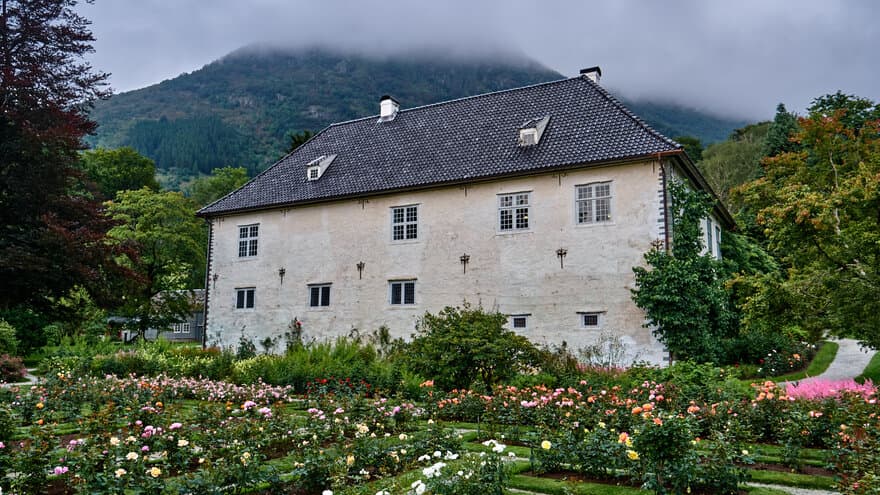The VR-Lab at NMBU produces story-guided VR tours for historical gardens and parks. These virtual tours enable educators, researchers and students to observe and understand the complications of historical sites interactively, providing a comprehensive historic experience.
The teaching of the history of garden art and landscape architecture is central to all landscape architecture education. Traditionally, the courses have been organised as lecture series, where the students get information about the historic gardens through lectures accompanied by screen presentations, literature, websites and sometimes excursions or study tours.
Sometimes, students have assignments linked to the courses, such as written essays, posters with drawings and other kinds of image/text, whilst other times physical or virtual models of historic gardens are used.
It is, however, increasingly hard to find time to build models, whether physical or virtual. Excursions and study tours with classes of 50+ students are difficult to justify in a climate perspective, and hard to find funding for. One challenge related to this kind of teaching is the relatively low level of interactivity and student engagement: students basically sit and listen to lectures and then make an exam at the end of the course. There is a potential to increase two-ways communication in the classes by using quizzes and encouraging discussions, but usually only a small minority get engaged in the discussions. In addition, excursions and teaching activities at universities has been heavily affected due the outbreak of the corona pandemic by early 2020. Teaching at universities has become increasingly digitalised, and students now incorporate new technologies in their work as a matter of course.
The recent development in Virtual Reality (VR) technology has enabled a major leap forward for educators and researchers. With the fast-growing technological advancements in VR technology and easier access to more affordable computer graphics hardware it has become possible to create a diverse range of Virtual Tours (VT) that are geared for learning and studying historically important landscapes. A library of VT will facilitate a story guided tours for historical gardens and sites that will enable educators, researchers and students to observe and understand the complications of historical site interactively and dynamically and provide a comprehensive historic experience of them. The VT library will also act as a medium for the preservation, documentation, interpretation and intervention, assisting in research, education and an increase awareness regarding the significant value for historically important landscapes.
During the autumn of 2020, Annegreth Dietze-Schirdewahn from the Theory and History Research Group in collaboration with Ramzi Hassan from VR-Lab started experimental project with students focused on the implementation of VT for the historical garden Baroniet Rosendal in Norway.
The VT is based on the integration of 360° images where they can look around, either on their screens or with visual headsets. There is a map following each location so the user will always be able to know where he or she is, and each studied feature and historical layer is linked to information like imagery, videos, 3D re-constructed data, text or even short presentations, as ‘voice-over’ or small lectures on site. The VT will be used for teaching students the history of gardens. Students are e.g. be asked to visit a specific garden location virtually as a preparation to the lecture, or they can be asked to look for a specific feature in the garden which requires them to visit the different parts of the garden and look for certain facts. The activity created by this kind of action is highly dependent on the students’ own initiatives and will challenge their curiosity and may fit their normal screen presence more than an ordinary book may.
